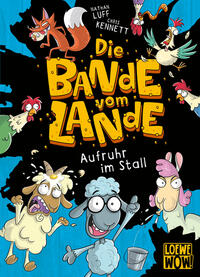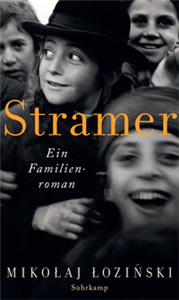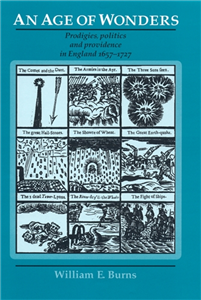Your Search Results
-
Springer Nature
For over 175 years Springer Nature has been advancing discovery by providingthe best possible service to the whole research community.We help researchers uncover new ideas, makesure all the research we publish is significant, robust and stands up to objectivescrutiny, that it reaches all relevant audiences in the best possible format, and can be discovered, accessed, used, re-used and shared.Wesupport librarians and institutions with innovations in technology and data; and providequality publishing support to societies. As a research publisher, Springer Nature is home to trusted brands including Springer, Nature Research, BMC, Palgrave Macmillan and Scientific American. https://group.springernature.com/gp/group
View Rights Portal
-
Promoted Content
-
Promoted Content
-
 Trusted Partner
Trusted Partner
-
 Trusted Partner
Trusted Partner
-
 Trusted Partner
July 2003
Trusted Partner
July 2003Nathan der Weise
Ein dramatisches Gedicht in fünf Aufzügen
by Gotthold Ephraim Lessing, Wilhelm Große
Text und Kommentar in einem Band. In der Suhrkamp BasisBibliothek erscheinen literarische Hauptwerke aller Epochen und Gattungen als Arbeitstexte für Schule und Studium. Der vollständige Text wird ergänzt durch anschaulich geschriebene Kommentare.
-
 Trusted Partner
August 2010
Trusted Partner
August 2010Kuckuck, Krake, Kakerlake
Das etwas andere Tierhörbuch
by Bibi Dumon Tak, Meike Blatnik, Andreas Manhart, Felix von Manteuffel, David Nathan, Patrick Bach, Robert Stadlober, Andreas Fröhlich, Isabella Grothe, Anne Helm, Anne Moll, Oliver Rohrbeck, Jens Wawrczeck, Rainer Strecker, Fleur van der Weel
Die verrückte Welt der Tiere – zum Lachen, Lernen, Lustigfinden! Wer kennt den Wasserreservoirfrosch? Das dsungarische Zwerghamstermännchen? Diese Tiere gibt es tatsächlich – und sie sind nicht nur selten, sondern haben auch besondere Fähigkeiten: Der Frosch verwandelt sich in trockenen Zeiten in eine Mumie und der Hamster ist ein begabter Geburtshelfer. Und wussten Sie schon, dass es Fische gibt, die hungrigen Delfinen einfach davonfliegen? Mehrfach ausgezeichnetes Hörbuch, u.a. Gewinner des Deutschen Kinder- und Jugend-Hörbuchpreis 2010. Ungekürzte Lesung mit Musik und vielen bekannten Sprechern (Patrick Bach, Andreas Fröhlich, Isabella Grothe, Anne Helm, Leslie Malton, Felix von Manteuffel, Anne Moll, David Nathan, Oliver Rohrbeck, Robert Stadlober, Rainer Strecker, Jens Wawrczeck). Für Tierliebhaber und alle, die neugierig sind! Witziges, liebevolles und humorvolles Hörbuch für Kinder ab 8 Jahren.
-
 Trusted Partner
Trusted Partner
-
 Trusted Partner
Trusted Partner
-
 Trusted Partner
October 2024
Trusted Partner
October 2024Stramer
Ein Familienroman
by Mikołaj Łoziński, Renate Schmidgall
Sensibel und mitreißend erzählt Mikołaj Łoziński von einer einfachen jüdischen Familie zu Beginn des 20. Jahrhunderts, von ihrem Alltag, ihren Hoffnungen, Träumen und Reibereien – und von einer berührenden Verbundenheit in sich verdunkelnden Zeiten. Die winzige Wohnung in der Goldhammerstraße platzt aus allen Nähten: Nathan Stramer, seine Frau Rywka und ihre sechs Kinder schlagen sich so durch. Nathan hat sein Glück zu Beginn des Jahrhunderts in New York gesucht und ist nach einigen erfolglosen Jahren wieder nach Galizien zurückgekehrt. Sein Geschäftssinn ist so ungebrochen wie trügerisch – Tausende Kerzen, leider ohne Dochte, dann der Wagen voll Kolophonium, wie hätte er ahnen können, dass es so wenige Geiger gibt in Tarnów?Nebenbei versucht er, seine sechs Kinder auf den Weg zu bringen. Aber die Kinder haben ihre ganz eigenen Wege im Sinn. Und während Nathan sich in die nächste Geschäftsidee versteigt, die ihnen endlich den Umzug in die Neue Welt, das elegante jüdische Viertel mit den Buntglasfenstern und den verzierten Erkern bringen soll, wachsen die Kinder heran. Die Zeiten werden härter, der wachsende Antisemitismus vergiftet die gesellschaftliche Atmosphäre immer stärker. Mit dem Einmarsch der Deutschen in Polen scheint das Ende der Familie vorgezeichnet.
-
 Trusted Partner
Humanities & Social SciencesApril 2010
Trusted Partner
Humanities & Social SciencesApril 2010An age of wonders
Prodigies, politics and providence in England 1657–1727
by William Burns, Kim Latham
Monstrous births, rains of blood, apparitions of battles in the sky - people in early modern England found all of these events to carry important religious and political meanings. In An age of wonders, available in paperback for the first time, William E. Burns explores the process by which these events became religiously and politically insignificant in the Restoration period. The story involves the establishment of early modern science, the shift from 'enthusiastic' to reasonable religion, and the fierce political combat between the Whigs and the Tories. This historical study is based on close readings of a variety of primary sources, both print and manuscript. Burns claims that prodigies lost their religious meaning and became subjects of scientific enquiry as a result of political struggles, first by the supporters of the restored monarchy and the Church of England against Protestant dissenters, and then by the Whig defenders of the Revolution of 1688 against the Tories and the Jacobites. By integrating religious and political history with the history of science, An age of wonders will be of great use to those working in the field of early modern history. ;
-
 Trusted Partner
March 1994
Trusted Partner
March 1994Die andere Zeit
Roman
by Peter Becker
Peter von Beckers erster Roman »Die andere Zeit« ein figuren- und geschichtenreiches Prosa-Panorama, in dem sich Träume, Faszinationen und Ängste des deutschen, des europäischen Zeitenwechsels ineinander spiegeln. Einem großen Triptychon gleich, entfaltet Peter von Becker in drei Bildern die Zeit vom November 1989 bis zum November 1990. Vom Fall der Mauer bis zur eskalierenden Golfkrise. Das erste Bild erzählt über dieses Jahr hinweg von Gabriele Zimmer und dem ungaro-rumänischen Künstlernomaden Igor Patak. Mit seinen apokalyptischen Komödien macht er im Berliner Kulturbetrieb Karriere und zieht die gerade geschiedene Enddreißigerin, Zahnärztin und Industriellenerbin, in seinen Bann. Zugleich ergibt sich eine untergründig spannungsvolle Beziehung zu Gabrieles neunjähriger Tochter Johanna. Eine westöstliche Geschichte immer an der Scheide zwischen Glück und Katastrophe - im Berlin einer End- und Gründerzeitgesellschaft. Mit einem überraschenden Finale. Das zweite Bild ist ein thrillerhaftes indisches Intermezzo. Ein Tag im Spätsommer 1990, der Photograph Berthold Preis, Beobachter schon der Berliner Szene, glaubt sich zwischen Dresden, Leipzig und Benares einer sonderbaren Affäre um frühe Menschenexperimente auf der Spur - und verstrickt sich zwischen Diebstahl und Diarrhöe in ein dramatisches Abenteuer. Das dritte Bild zeigt einen Monat im Leben von Nathan Kasperer. Er ist ein Spieler und Anwalt in Frankfurt, verheiratet mit einer Allergologin, Vater des siebenjährigen Jakob und ein früherer Freund von Gabriele Zimmer. Im Herbst 1990 holt Nathan Kasperer im Schatten der Golfkrise das Bild Mirjam Zadigs ein. Mit ihr, einer im Libanon geborenen Französin, verband Nathan eine Liebesaffäre, die unter mysteriösen und für ihn einst lebensgefährlichen Umständen zu Bruch ging. Kasperer macht sich von Berlin und Frankfurt auf den Weg nach Bordeaux, auf Mirjam Zadigs Spuren. Eine Reise voll leiser Schrecken beginnt, die, wie einem ›Gesetz der Serie‹ folgend, von Station zu Station immer aberwitzigere und bedrohlichere Züge annimmt.
-
 Trusted Partner
Trusted Partner
-
 Trusted Partner
Trusted Partner
-
 Trusted Partner
Trusted Partner
-
 Trusted Partner
Trusted Partner
-
 Trusted Partner
Trusted Partner
-
 Trusted Partner
Trusted Partner
-
 Trusted Partner
The ArtsMay 2011
Trusted Partner
The ArtsMay 2011Performing Herself
Autobiography and Fanny Kelly's Dramatic Recollections
by Gilli Bush-Bailey, Kate Dorney, Maggie B. Gale
This unique book contains the never before published script of the first ever one-woman show, written by Fanny Kelly. The script was performed in Britain in the 1830s and 40s, based on Kelly's own experiences and offers a picture of the exuberant and often bizarre Georgian entertainment world. The performance text is introduced, edited and explained by Gilli Bush-Bailey, who focuses 21st-century revisionist scholarship on Kelly's story. It is an innovative contribution to the modern debate on biographical and autobiographical writing, whilst also being a valuable text for those who wish to study comedy and women's performance. The materials and methods of the modern stand-up routine are already to be seen in this unusual text. This book will appeal to students and scholars who are involved in performance, theatre history, or biography. It is also an accessible text for the interested general reader. ;
-
 Trusted Partner
Trusted Partner
-
 Trusted Partner
Literature & Literary StudiesSeptember 2008
Trusted Partner
Literature & Literary StudiesSeptember 2008Epicene, or The Silent Woman
by Ben Jonson
by Richard Dutton
Epicene is now one of the most widely-studied of Johnson's plays. Brilliantly exploiting the Jacobean convention whereby boys played female roles, it satirises the newly fashionable and sexually ambiguous world of the West End of London, where courtly wit rubs shoulders with commercial values. This authoritative new edition, now in paperback, is based on a thorough re-examination of the earliest texts. The introduction analyses the play as originally written for the newly formed Children of the Queen's Revels, and performed at the little-known Whitefriars Theatre. Dutton discusses the composition of the play, which took place during a critical period in Jonson's life and career, when he was established as the principal writer of entertainments at the court. His relationships at this time, with ambitious wits such as John Donne, Sir Edward Herbert and the actor Nathan Field, are examined as models for the principal characters. This challengingly historicised text of Epicene will be essential reading for all serious students of early modern drama. ;

































